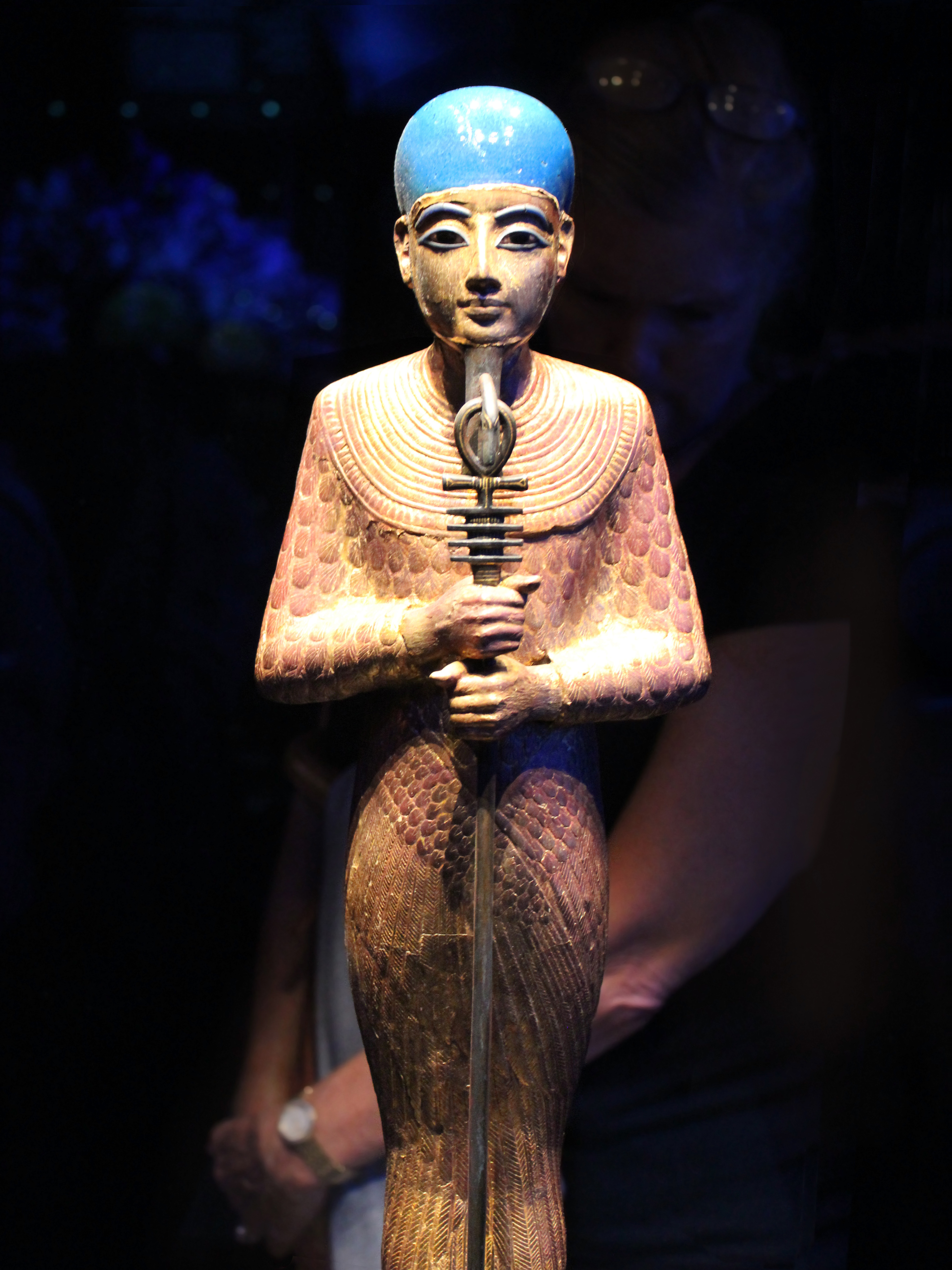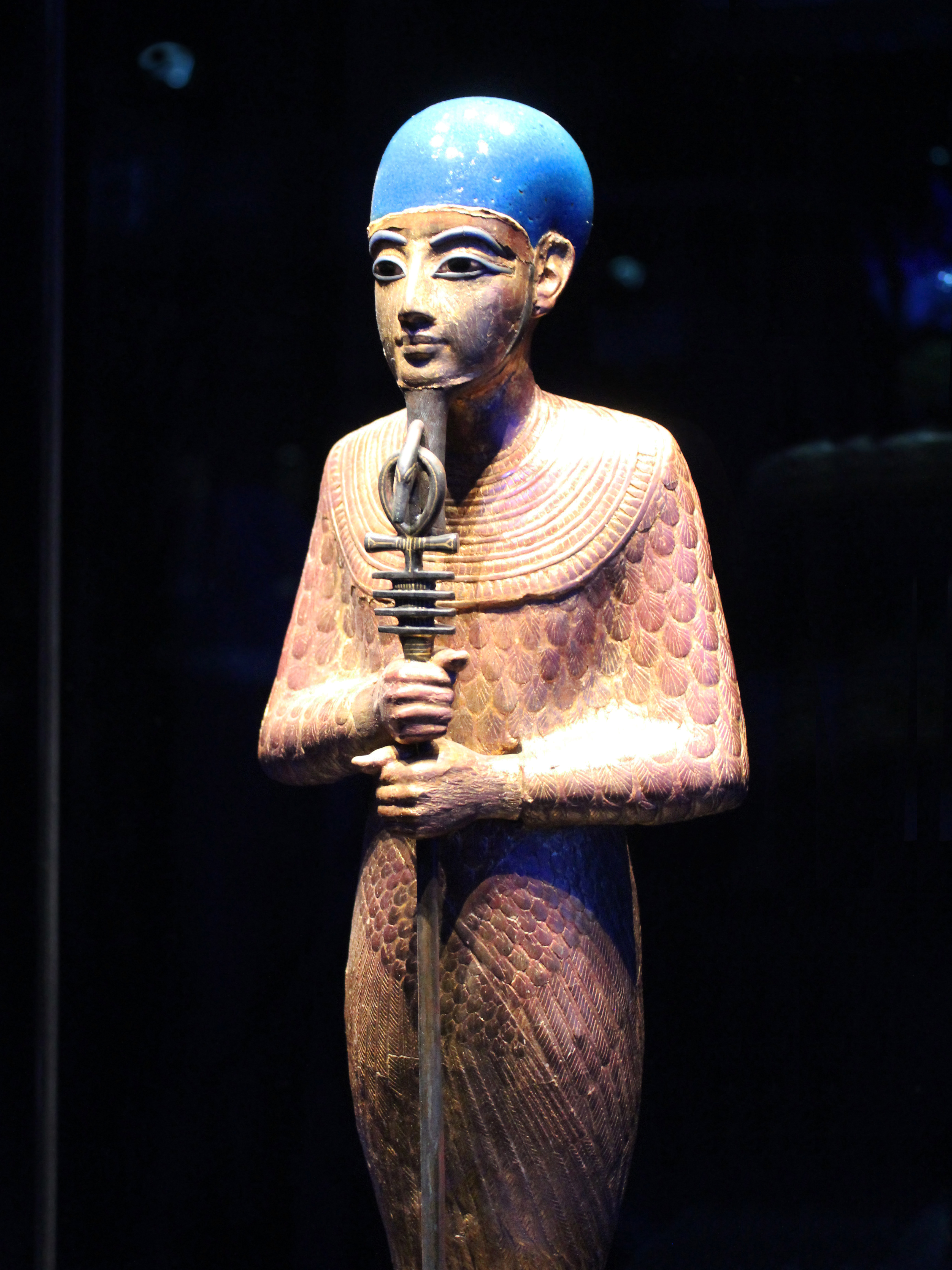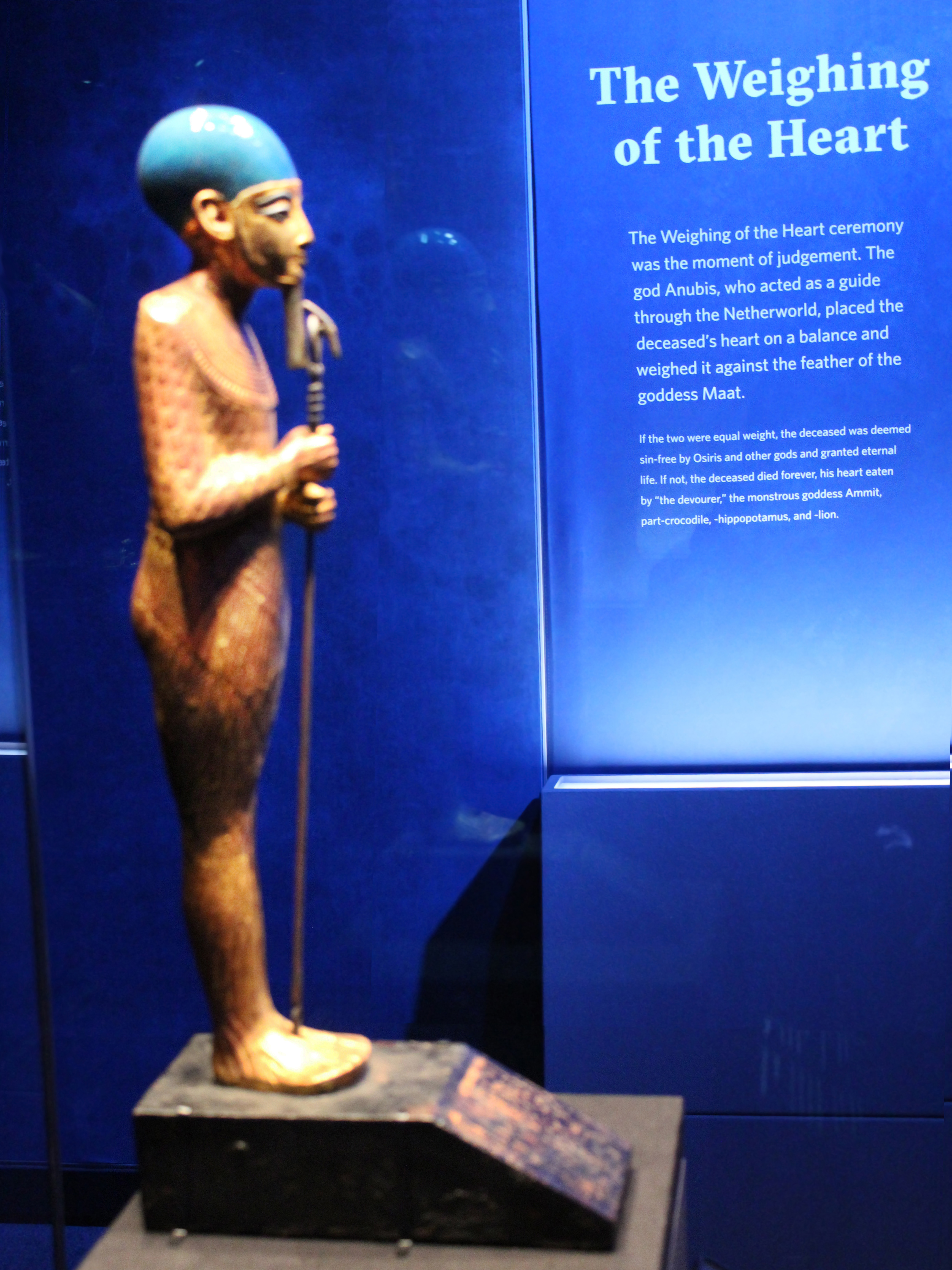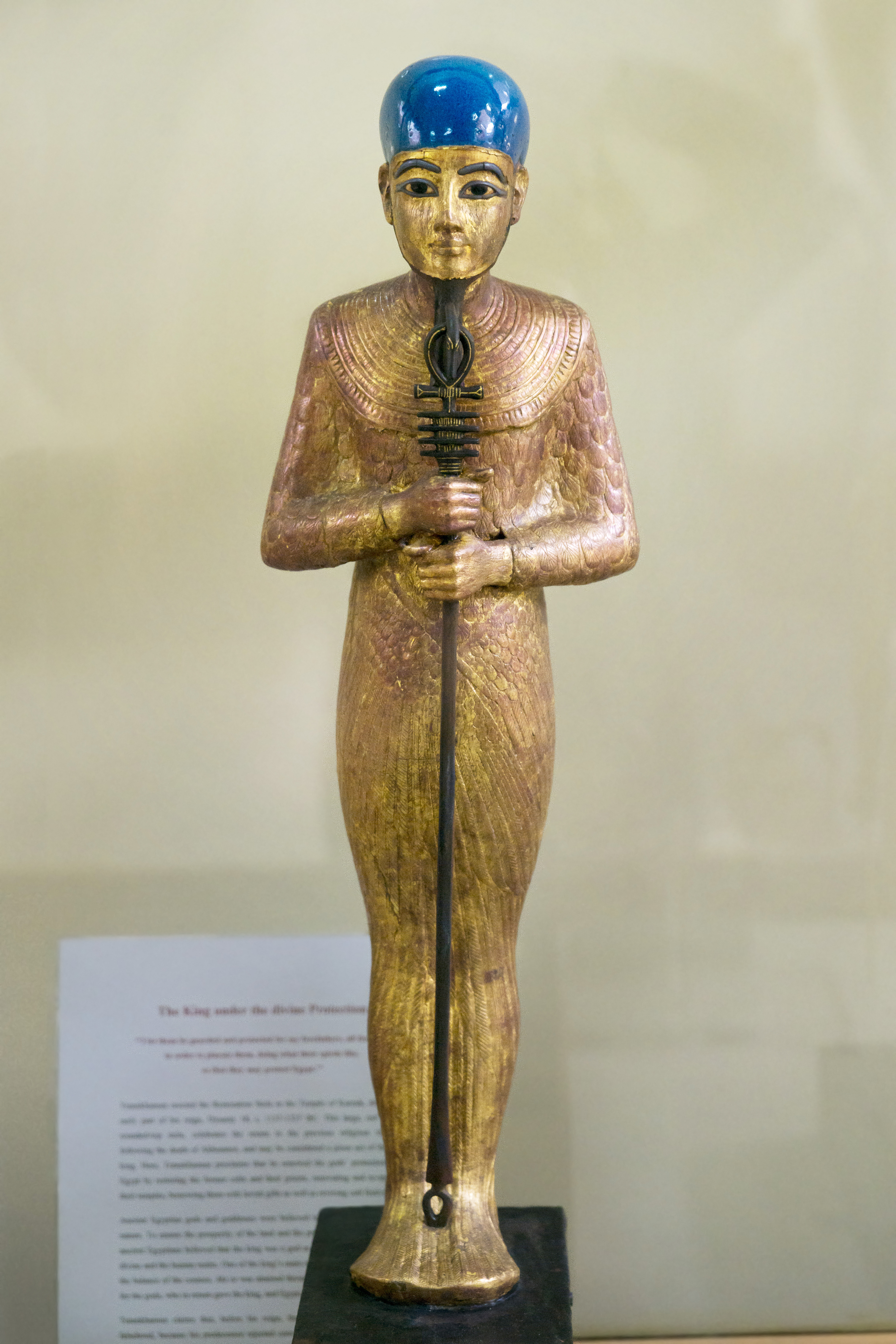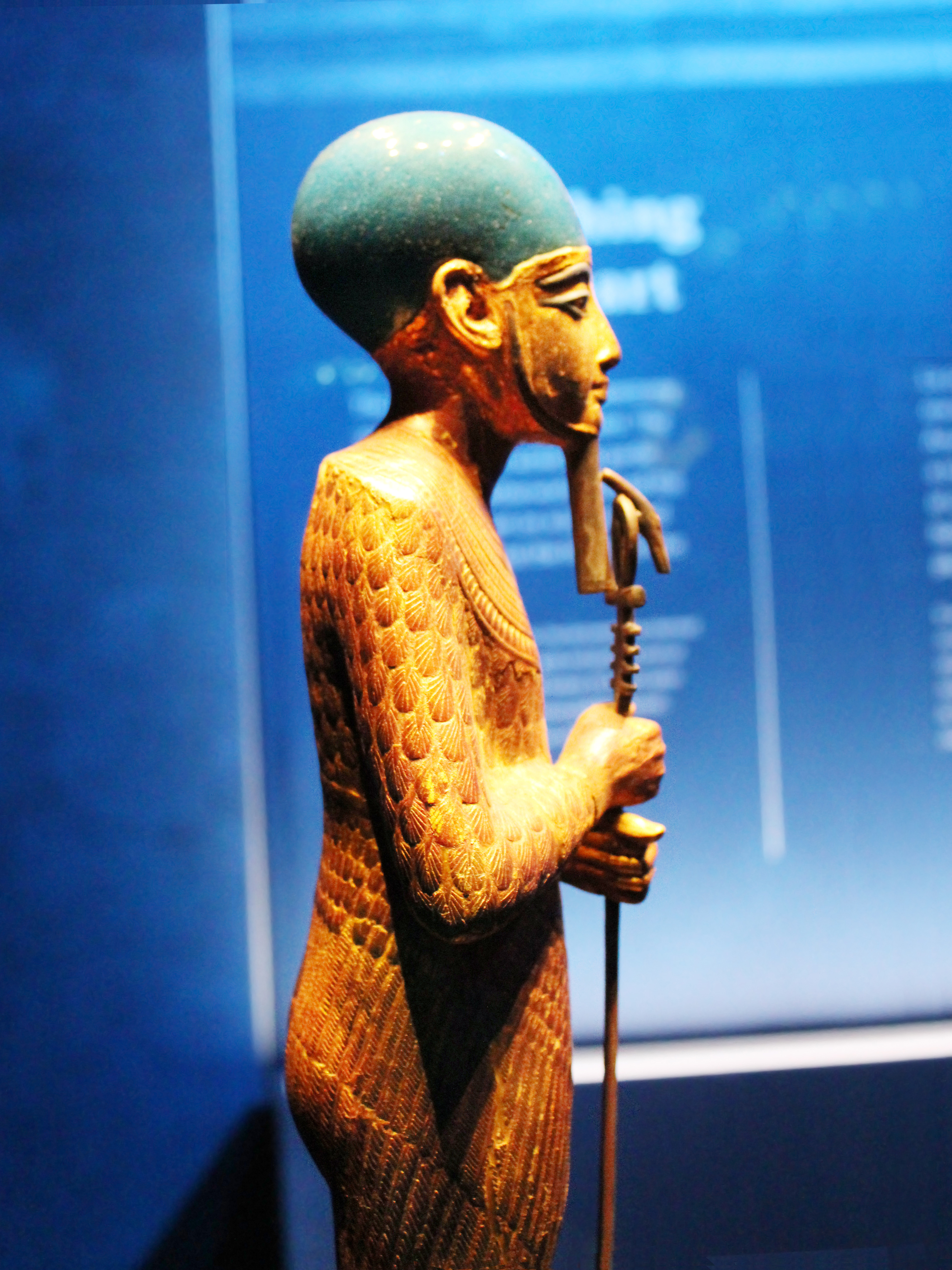|
Ptah is "one of the oldest of Egypt's gods and is attested representionally from the 1st dynasty onward. Nevertheless the great god of Memphis was perhaps originally only a locally important deity whose influence developed and spread slowly over time." "If Ptah was not originally a god of craftsmanship, this aspect of his identity was certainly an ancient one as it can be seen at an early date and then remains constant throughout the god's history." "During the Old Kingdom the high priest of Ptah bore the title wer-kherep-hemu 'great leader of the craftsmen': and while the god's name gives no firm clue to his origin, it is perhaps based on a root of later words meaning 'to sculpt' and thus related to his identity as a craftsman god. In this role Ptah was both the sculptor or smith of mankind and creator of the arts and crafts..."
"As a result of his identification with craftsmanship, or concurrent with it, Ptah became a god of creation and was known as the 'sculptor of the earth' who, like the ram god Khnum was believed to form everything on his potter's wheel. More fundamentally, Ptah came to be known as the 'ancient one' who united in his person both the masculine primeval deity Nun and his feminine counterpart, Naunet, so that he was seen as the primordial deity whose creative power was manifest in every aspect of the cosmos."
Honourific titles:
Nefer-her - 'merciful of face' (beautiful of face?)
Neb-Ma'at - 'lord of truth' (justice, balance)
Mesedjer-sedjem- 'the ear which hears'
All above info from Richard H. Wilkinson, Complete Gods and Goddesses of Ancient Egypt, Thames and Hudson 2003) (pages 123-126)
I can provide hieroglyphs for one of these titles, thanks to a stele at the British museum and the Chapel of Ptah at Abydos:

Two different ways to write "Lord of Truth", one has the Netjer figure determinative in Ptah's name, while the other two don't.
Truth (Ma'at) is referenced two different ways, one with the figure of the Goddess Ma'at, and two with the Ma'at plinth
As with Thoth, Ptah also has a Reconciling Reputation. "Horus and Seth 'were reconciled and united...their quarreling ceased...being joined in the House of Ptah...'" (from the Shabako Stone, quoted by Simson Najovits in "Egypt, Trunk of the Tree", (Algora Publishing, 2003), page 191)
"And so all the gods and their kas assembled together for him (the god Ptah). The Peaceful and Reconciling One (a name of Ptah) was lord of the two lands." (Memphite Theology as quoted by John Gwyn Griffiths in The Origins of Osiris and His Cult, (Brill, 1980), page 160)
|

